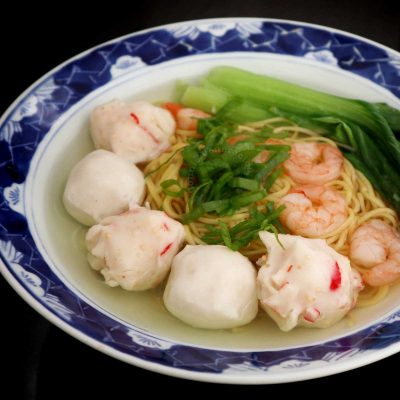It’s a one-pot dish served as a one bowl meal. It’s so easy to make so long as you have the best ingredients. We’ll go through these ingredients one by one.
What’s the best rice variety for this dish?
That really depends on what texture you’re aiming for. If you want the rice grains to stick to each other by the time they’re cooked through, I suggest Japanese rice. If you want the grains to stay separate, it’s jasmine rice or Basmati. Please don’t use sticky (glutinous) rice for this dish.

What’s more important is that you soak the rice to plump up the grains up before cooking. And it’s even more important to use only as much broth as is necessary to cook the rice. Use too little and the rice will be underdone; use too much and it will get mushy. And if you use far too much, you’ll end up with something like congee. For more about rice varieties and the amount of liquid that each one requires, see the linked article below.
How to cook rice
Does rice need to be rinsed? Is soaking required? How much water should the rice cook in? The answers to all these and more in this guide to cooking rice, Asian-style.
What mushroom and dumplings are ideal?
For the mushrooms, I used a combination of fresh eryngii and shiitake. But you may use other varieties so long as they’re fresh, or dried and rehydrated. Canned mushrooms are a huge NO.

Slice your mushrooms, dump into a bowl, add stringed green beans, black bean and garlic sauce, Chinese chili oil and toss well. When the rice has soaked up the cooking liquid, spread the mushrooms and green beans on top and continue cooking until done.
The water expelled by the beans and mushrooms, along with some of the sauce, will fall into the rice to provide just the right amount of additional liquid to ensure that the rice gets cooked through.
When the beans and mushrooms are done, arrange dumplings on top and fill the gaps with whole shrimps. The dumplings used here are store-bought — Korean vegetable dumplings that we buy frozen. If you prefer pork, chicken or mushroom dumplings, go ahead and substitute.

It takes about ten minutes to cook the vegetable dumplings via steaming. By that time, the shrimps should be done but not overcooked. All that the dish needs at this point are scallions and toasted sesame seeds for added color, texture, flavor and aroma.

And while it’s completely optional, drizzling Sriracha (both red and green) over everything just before serving gives the dish a nice kick.
Claypot rice with shimps and dumplings

Equipment
- 8-inch donabe (Japanese claypot)
Ingredients
- 1 ½ cups rice (jasmine is used here)
- 1 ½ cups bone broth should be well seasoned
- 200 grams green beans stringed and cut into two-inch lengths
- 2 fresh eryngii mushrooms sliced
- 6 to 8 fresh shiitake (caps only) thinly sliced
- 1 heaping tablespoon black bean and garlic sauce (see notes)
- 1 teaspoon chili oil (see notes)
- 8 to 12 frozen vegetable dumplings store-bought
- 200 to 300 grams whole cleaned shrimps bought frozen then thawed and tossed with a teaspoon of salt and a quarter teaspoon of white pepper
- 2 tablespoons sliced scallions
- 1 tablespoon toasted sesame seeds
- Shriracha optional
Instructions
- Rinse the rice several times until the water runs clear. Place in a bowl, cover with water three cups of water, and soak for three hours.
- Drain the rice well and transfer to a claypot.
- Pour in the broth, cover and cook over medium heat until the liquid has been soaked up (it takes about ten minutes).
- Toss the green beans, mushrooms and the two sauces together, and spread on top of the rice. Cover the claypot and cook, still over medium-low heat, for about ten minutes.
- Arrange the dumplings on top of the beans and mushrooms.
- Drop shrimps into the gaps between the dumplings.
- Cover the claypot and cook for another ten minutes over medium-low heat.
- Top with scallions and sesame seeds (drizzle in Sriracha, optionally), and serve immediately.





